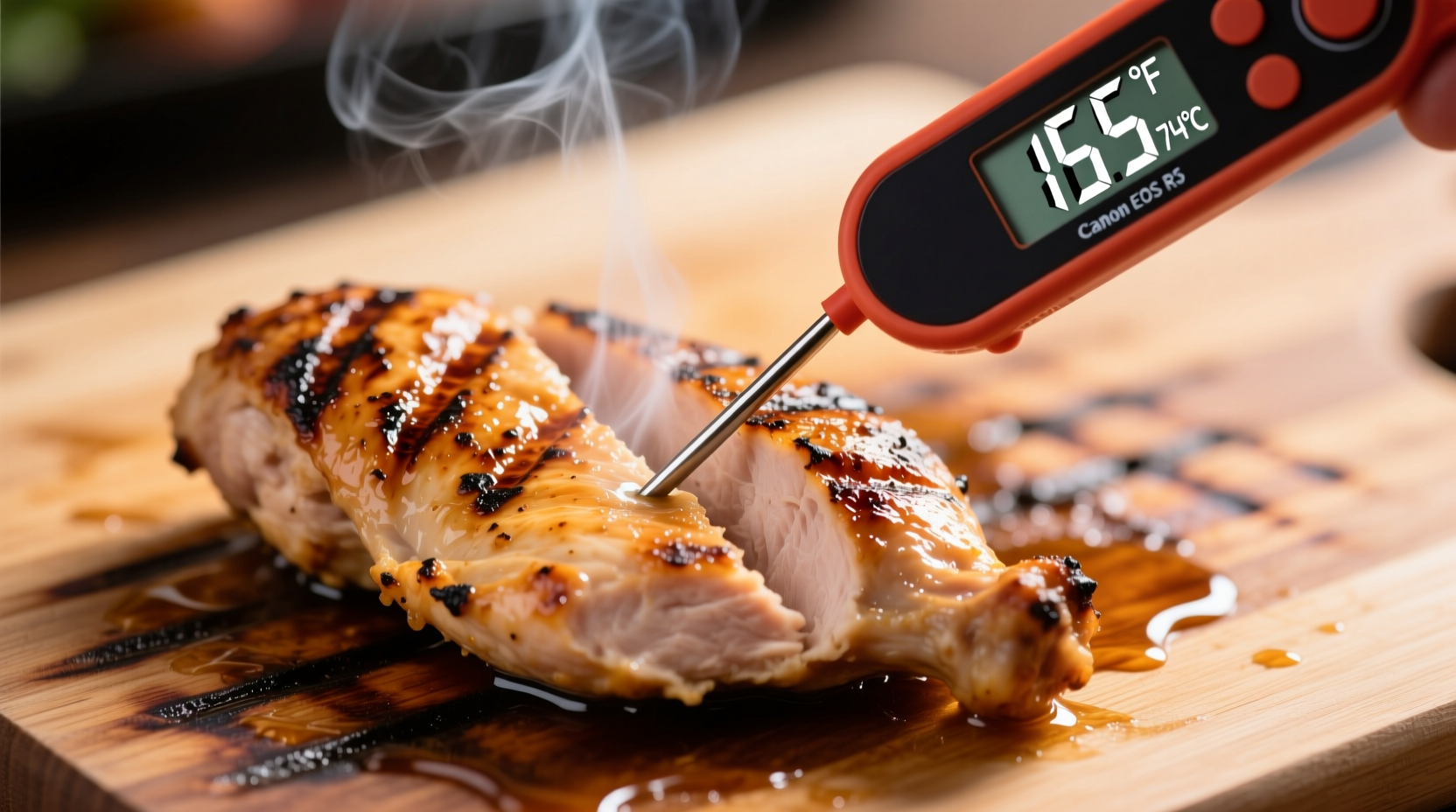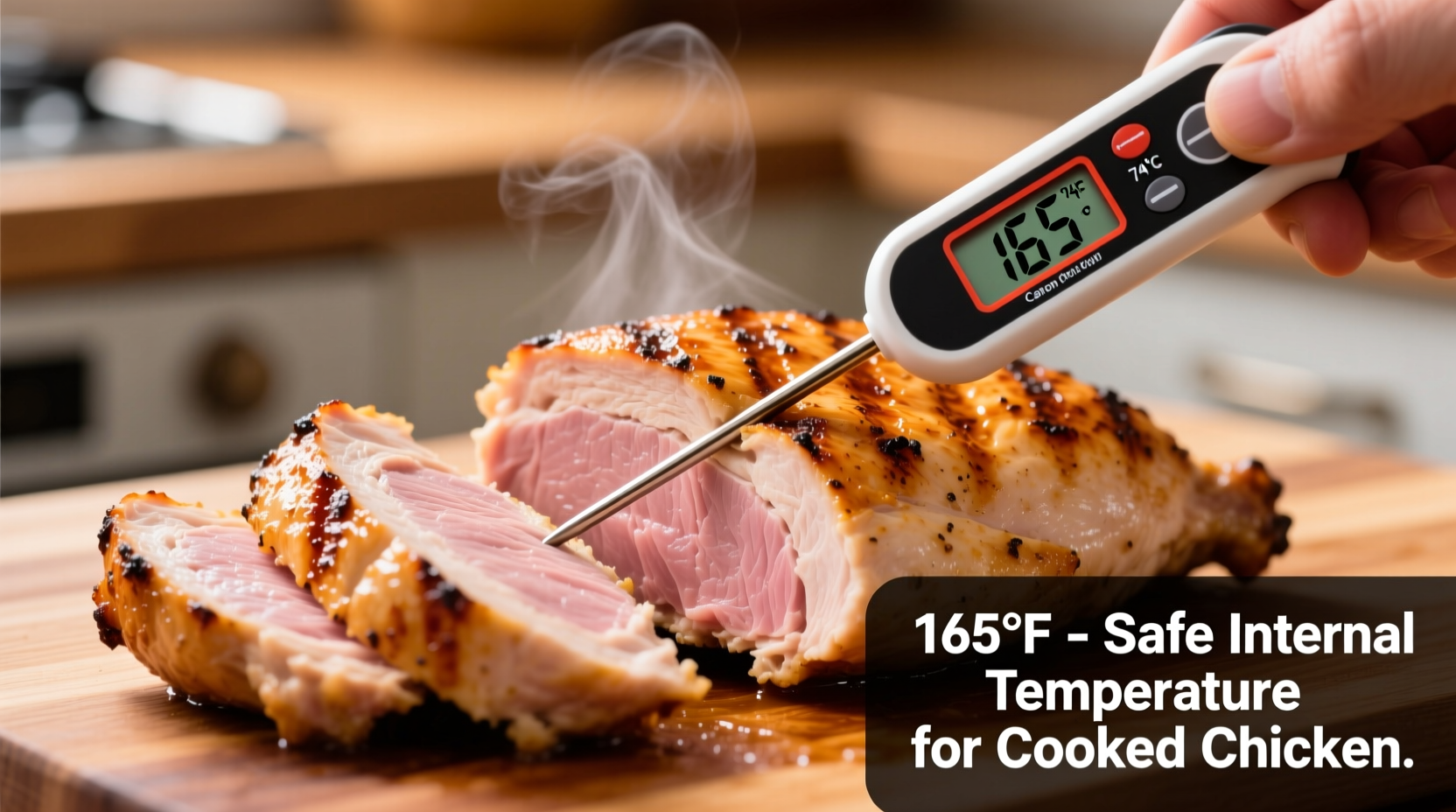Getting chicken temperature right isn't just about doneness—it's your primary defense against food poisoning. Every year, undercooked poultry causes millions of foodborne illness cases. This guide delivers the exact science-backed temperature standards professional chefs and food safety experts use to guarantee safe, perfectly cooked chicken every time.
Why 165°F Is Non-Negotiable for Chicken Safety
Chicken requires special attention because of its susceptibility to dangerous pathogens. The USDA's 165°F standard isn't arbitrary—it's the precise temperature where Salmonella and Campylobacter bacteria are instantly destroyed. Unlike beef, chicken's structure allows bacteria to penetrate deeper into the meat, making surface cooking insufficient.
| Pathogen | Death Temperature | Time to Destroy at 165°F |
|---|---|---|
| Salmonella | 160°F (71°C) | Instant |
| Campylobacter | 165°F (73.9°C) | Instant |
| Listeria | 165°F (73.9°C) | Instant |
This critical temperature threshold comes from the USDA Food Safety and Inspection Service, which continuously monitors foodborne illness data to establish science-based safety standards. The FDA Food Code aligns with this recommendation, emphasizing that visual cues like color changes or juice clarity are unreliable indicators of safety.
Measuring Temperature Like a Professional
Accurate temperature measurement requires proper technique, not just the right tool. Follow these steps for reliable readings:
- Use a calibrated instant-read thermometer - Digital thermometers provide the most accurate results (within ±0.5°F)
- Target the thickest part - Insert probe into the densest muscle area, avoiding bone or fat pockets
- Check multiple spots - Especially for whole birds or stuffed poultry
- Clean between measurements - Prevent cross-contamination with hot, soapy water

Avoid These Critical Temperature Mistakes
Even with the right target temperature, common errors can compromise safety:
- Thermometer placement errors - Measuring near bone gives falsely high readings
- Not allowing stabilization time - Wait 10-15 seconds for digital readings to settle
- Relying on pop-up timers - These often trigger at 150-155°F, below safety threshold
- Ignoring carryover cooking - Temperature continues rising 5-10°F after removal from heat
Special Cases and Considerations
Different cooking methods and chicken preparations require nuanced temperature approaches:
- White vs. dark meat - Both require 165°F, though dark meat can be cooked to 170-175°F for texture preference
- Sous vide cooking - Requires longer time at lower temperatures (145°F for 27.5 minutes)
- Resting period - Let chicken rest 3-5 minutes after cooking for juices to redistribute
- Reheating leftovers - Must reach 165°F again to ensure safety
The CDC emphasizes that proper temperature control prevents approximately 1 million foodborne illnesses annually linked to undercooked poultry. When cooking for vulnerable populations—children, elderly, or immunocompromised individuals—strict adherence to the 165°F standard becomes even more critical.
Temperature Troubleshooting Guide
If your chicken hasn't reached 165°F:
- Below 140°F - Return to heat immediately; bacteria multiply rapidly in this danger zone
- 140-150°F - Continue cooking but monitor closely; significant bacterial reduction begins here
- 150-160°F - Cook 1-2 more minutes; pasteurization occurs but isn't instantaneous
- 160-165°F - Hold at this range for 15-30 seconds to ensure safety if slightly below target
Remember that oven temperatures, grill hot spots, and cooking methods all affect how evenly chicken cooks. Always verify with a thermometer rather than relying on cooking time alone. The USDA confirms that properly cooked chicken may still appear slightly pink near bones—color is not a reliable doneness indicator.











 浙公网安备
33010002000092号
浙公网安备
33010002000092号 浙B2-20120091-4
浙B2-20120091-4